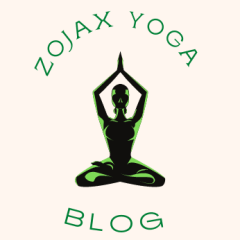Waking up at night while sleeping
The most common cause of waking up at night is anxiety. When the mind is agitated due to a specific problem that surpasses our current skills, we sleep in bed, not at all calm, with anxiety in the subconscious, and wake up with worry as the first thought in our heads. Then we usually start to go over the same topic in our heads and become more and more anxious. The nervous system strains to the maximum and finally we fall into a comatose sleep, completely exhausted, usually before dawn, just before the alarm goes off.
Night eating
A man does not need food at night. At night, all body systems slow down and seek much-needed rest. The stomach locks—it doesn’t work. A healthy person never feels the need for food during the night. Night hunger is a consequence of the disturbed secretion of stomach acid “when it is not her time”, and it is caused by stress. If we eat it then, the digestive system does not function well and the digestion of food is incomplete. Uncoordinated metabolic processes lead to the release of large amounts of toxins from incompletely digested food. We wake up heavy, often with a bloated stomach and mild nausea.
False insomnia
False insomnia is the most common sleep disorder. It appears as an obsession with good sleep in the form of a fear of insomnia. Although a person sleeps for a sufficient number of hours, they have the feeling that they have slept less than necessary. She was worried that she would not be able to fall asleep. She fell into a very difficult sleep. This results in an obsessive feeling of fear. When a person is born with the fear of not sleeping and it becomes a pattern of thinking, it is very difficult to realize and eradicate. Most insomnia is actually imaginary insomnia, and so the smallest, temporary sleep rhythm disorder grows into a major psychological problem and often drug dependence.
How much sleep does a person need?
Improves blood flow
It relaxes the muscles
It strengthens your mental health
It prevents you from using your cell phone before bed
10 gentle yoga poses for good sleep
Here is a guide to gentle yoga poses for good sleep that you can do on your own bed. These Yoga poses for sleep represent the perfect bedtime routine as they relax the muscles and mind. Although these exercises are relatively gentle, it is important to talk to your doctor first before embarking on a new way of exercising.
You may also like: Sun Salutation (Surya Namaskar) – health benefits
1.Meditation
This pose is ideal for those who want to spend a few minutes in quiet thinking before bed.
Start by sitting comfortably in a crossed-leg position. Sit with your spine straight, relax your arms and take three deep breaths. Try to clear your mind and focus on deep breathing, even though it may take some time for your mind to be ready.

People photo created by yanalya – www.freepik.com
2.Yoga pose – Seated Forward Bend (Paschimottanasana)
Seated Forward Bend is great if you want to do one of the most unpretentious bedtime poses. Sit on the bed and slowly bend your body forward, then gently reach your toes. If you can’t reach your feet, reach for your hips, knees, or thighs, whichever is most comfortable for you. Focus on exhaling, as this will deepen your range.

Woman photo created by yanalya – www.freepik.com
3. Yoga pose – Child’s Pose ( Balasana )
Kneel on the bed with your feet together, then spread your knees to hip width. Lean down slowly until you lie between your thighs. Stay there as long as you feel comfortable, deep and focused breathing.

People photo created by yanalya – www.freepik.com
4. Easy yoga pose Neck Rotation

House photo created by diana.grytsku – www.freepik.com
5.Reclined Goddess Pose (Supta Baddha Konasana)
This is one of the most relaxing poses on the list because you will be lying completely straight on the bed. Start by lying on your back and bending your knees. Put your feet together and just let your feet hang on each side. Just let your hands fall next to you. If you start to feel cramps or any strain in your lower body, place a pillow or two under each knee to lift your legs.

Woman photo created by freepik – www.freepik.com
6. Yoga pose Feet on the Wall

Photo by Andrea Piacquadio from Pexels
7. Yoga pose knees to chest pose
This is a calming pose, or at the same time quite physically stimulating. It is similar to the popular ‘happy baby’ pose in that both feet are in the air and facing you. Lie on the bed and gather your knees and pull them to your chest. Then cross the ankles on your legs and hug the leaves with your hands. Swing your body forward to sit, then back, exhaling at the same time. “Find a quiet point in your body and focus,” says instructor Bielkus. “This will lengthen the lower back and allow the hips to stretch.”

Background photo created by yanalya – www.freepik.com
8. Yoga pose Pigeon Pose (Eka Pada Rajakapotasana)
This is one of the more physically intense poses, but it works wonders for tired legs. Start on all fours, and keep your arms outstretched in line with your shoulders. Bring your left knee forward, between your arms, and stretch your right leg behind you on the bed. Exhale and bend your body forward over your left knee. Stay that way as long as you feel comfortable. Do this for a few minutes, then swap to the other side.

Background photo created by yanalya – www.freepik.com
9. Yoga pose Reclining spinal twist pose

Photo by Pexel.com
10. Yoga pose Fish Pose (Matsyasana)
This yoga pose might be a little too intense at first, especially for those with back pain. But it is definitely interesting! Lie flat on your back, and place your hands under your hips. Then slowly lift your chest and gently stretch your head back. Stay like this for a while, then go down and repeat.

Image by yanalya on Freepik



